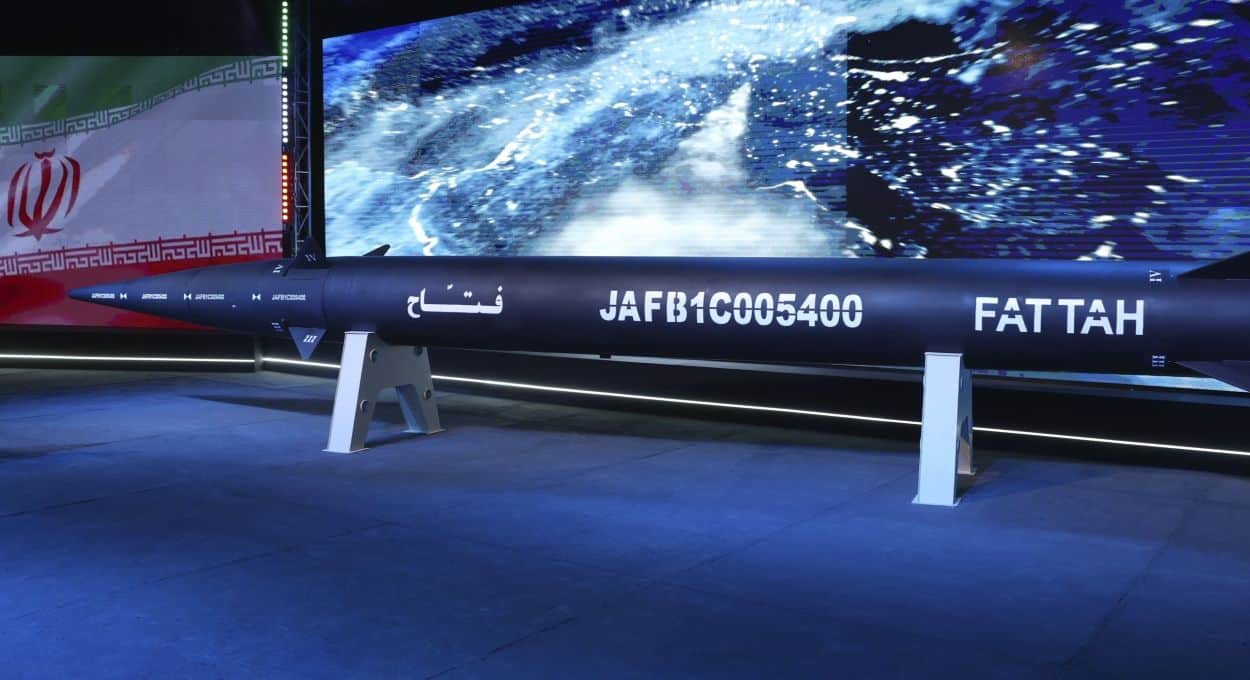On June 18, 2025, Iran’s Islamic Revolutionary Guard Corps (IRGC) confirmed the use of the Fattah-1 hypersonic missile in strikes against Israel, marking its first publicly acknowledged combat deployment.
Fattah-1 hypersonic missile unveiled in 2023, this advanced weapon, named by Supreme Leader Ayatollah Ali Khamenei, is designed to evade missile defence systems like Israel’s Iron Dome and Arrow. As the Israel-Iran conflict intensifies, with over 200 deaths reported, the Fattah-1’s emergence highlights the evolving nature of missile warfare and its implications for Middle Eastern security.
What is the Fattah-1 Missile?
The Fattah-1, developed by the IRGC and unveiled in June 2023, is Iran’s first hypersonic medium-range ballistic missile (MRBM). Key features include:
- Speed: It reaches Mach 5 (approximately 3,800 mph or 6,100 km/h), with claims of up to Mach 15 (18,000 km/h) (Wikipedia).
- Range: Up to 1,400 kilometres, capable of striking Tel Aviv from Iran in about 400 seconds, Firstpost.
- Manoeuvrability: Equipped with a manoeuvrable re-entry vehicle (MaRV), allowing mid-flight course adjustments to evade defences
- Propulsion: It uses solid fuel for rapid acceleration and a single-stage Army Recognition system.
Iranian officials have dubbed it the “Israel-striker,” emphasizing its strategic role against Israel, as seen in a Tehran banner proclaiming “400 seconds to Tel Aviv” Firstpost.
🚨 This is Iran’s Fattah Hypersonic Missile — used in strikes on Israel.
With a range of 1,400 km and speeds up to Mach 15, it can hit targets like Tel Aviv in under 4 minutes, too fast for most missile defense systems to intercept pic.twitter.com/JHwOM8fUJ7
— Defence Index (@Defence_Index) June 15, 2025Threat to Israeli Missile Defences
The Fattah-1’s design poses a significant challenge to Israel’s multilayered air defence systems, including Iron Dome, David’s Sling, and Arrow. Its hypersonic speed and manoeuvrability reduce interception windows, as traditional ballistic missiles follow predictable paths, while the Fattah-1 can adjust its trajectory, Army Recognition. Fabian Hinz, a researcher at the International Institute for Strategic Studies, notes that the missile’s MaRV enhances its ability to evade defences during descent, CNN.
Reports indicate that Israel’s stockpiles of interceptor missiles may be under strain, as some missiles have managed to penetrate their defences during recent attacks, according to The Times of Israel. However, the Israel Defence Forces (IDF) assert that their interception rates remain high, comparable to those recorded in April and October 2024. They also dispute the classification of the Fattah-1 as a true hypersonic missile, arguing that it lacks sustained manoeuvrability in the atmosphere.
🚀 Iran deploys its Fattah hypersonic missile, can hit targets at over 13x the speed of sound — IRIB
With extreme maneuverability outside the atmosphere and a separate engine in its warhead
Image by IRIB News pic.twitter.com/ami7bgsRg6
— RT (@RT_com) June 18, 2025The Fattah-1’s combat use marks a potential turning point in missile warfare. It could force Israel to invest in advanced countermeasures, such as upgraded Arrow systems or U.S.-provided THAAD defences if proven reliable. Iran’s deployment signals its intent to counter Israeli strikes on its nuclear and military facilities, escalating the conflict.
The missile’s development, possibly with Russian technological support, raises questions about Iran’s advancing military capabilities.






